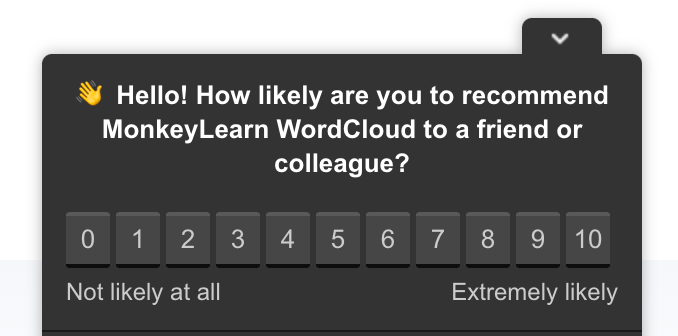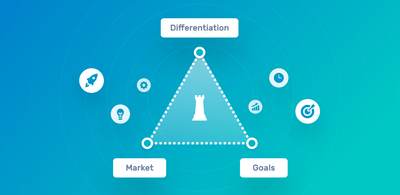Product Feedback Examples from Successful Companies

To create products that customers love, you need to put your customers at the center of everything you do. Asking for product feedback is essential to measure customer satisfaction among your existing customers, and helps you understand exactly what they want so you can improve products over time.
Based on what customers like and dislike about your products, you can update and prioritize features on your product roadmap, and enhance the overall customer experience.
Let’s take a look at some examples of how customer support teams are using customer satisfaction surveys to get to know their customers’ needs. Then, learn how to analyze data for actionable insights.
7 Product Feedback Examples from Top Brands
Here are some real-life examples of how brands are engaging with customers to collect product feedback:
1. You Tube

YouTube asks viewers to rate their level of satisfaction with the videos they watch on the platform. This allows them to improve their suggestion algorithm, a “real-time feedback loop that tailors videos to each viewer's different interests.”
Asking users to share their experience offers the company first-hand insights that they can later compare to other metrics such as Watch time or Audience retention.
2. Uber

Uber collects feedback in real-time to track drivers’ performance. After a trip, customers rate drivers from 1 to 5 stars. ‘Excellent’ feedback can also include a suggested compliment like “great conversation” or “expert navigation”. When a customer rates a driver with four stars or less, they’re asked to leave a reason for their score.
Based on customer feedback Uber assigns each driver a score, and those that receive several low ratings can be deactivated.
Product feedback is essential for Uber to provide the best possible customer experience, and take action in the event of potential issues or incidents.
3. Hotjar

Hotjar’s product and design teams collect, review, and act on product feedback on a daily basis. This customer-centric approach allows the company to constantly detect and fix product bugs, to provide a smooth user experience.
Through a website feedback widget, they ask users to rate their experience with the site. Open-ended questions are also included, so users can leave suggestions to improve the page.
Hotjar also sends NPS surveys to customers who have been using the product for more than 30 days, allowing them to analyze a customer’s overall experience, detect trends, measure customer sentiment, and detect issues.
4. MonkeyLearn

At MonkeyLearn, we encourage users to provide product feedback to help us improve user experience with our AI tools. Through in-app NPS surveys, we ask customers to express how likely they are to recommend our tools (in this case, the WordCloud generator) to a friend or colleague.
By analyzing NPS survey responses, we can measure customer loyalty and identify promoters, passives, and detractors among our users.
5. Asana

At Asana, listening to the Voice of Customer (VoC) plays an essential role in building their product roadmap. They often conduct online surveys to identify customer needs, detect trends, and spot frequent problems that users may be trying to solve.
After analyzing product feedback, the task management platform draws up a list of ten features to add to their roadmap. The next step is to decide which of them to prioritize, based on Asana’s market strategy, company vision, and business objectives.
6. Google

You’ve probably seen a box called People Also Ask in your Google Search results, and the opportunity to leave feedback on the information provided. Google asks users to rate how helpful, useful, or relevant the information was, and the option to leave a more detailed response.
Product feedback helps Google improve search results, by identifying suggestions that may be confusing for users and ensuring they provide accurate and relevant content.
7. Zapier

Zapier sends feedback surveys at different touchpoints of the customer journey, to understand how customers feel about their product and improve customer experience.
The image above shows a survey sent to users who signed-up for the Zapier newsletter, which offers a weekly dose of productivity tips. The purpose of these questions is to get an overview of the readers and how they interact with Zapier, so they can provide more personalized and relevant content to them. Zapier encourages users to complete the survey by giving them the chance to win a $500 Amazon gift card.
How to Put Product Feedback to Work
Asking for product feedback at every step of the buyer’s journey is key if you want to build better products. But that’s just the first step in the customer feedback loop.
What’s next? Analyzing customer data to spot trends, patterns, and relevant insights that can help you improve your business. And finally, turning customer insights into actions, aligned with your overall business strategy.
Let’s say you’ve conducted a series of online surveys and you have thousands of responses to analyze, both quantitative and qualitative feedback.
Analyzing quantitative survey data is fairly easy to do, using Excel, Google Sheets, or the in-built capabilities of your favorite survey tools.
However, diving into your qualitative or unstructured data ‒ such as open-ended survey responses ‒ can be a bit more challenging.
Most of this data is free text, which is hard to process. And yet it contains the most valuable insights about your customers, because it explains the reasons behind a certain score or response.
Fortunately, machine learning software offers a fast and scalable solution to analyze qualitative data from surveys, social media posts, emails, and more.
MonkeyLearn is a user-friendly SaaS platform that helps you draw insights from unstructured data through a set of powerful text analysis tools.
Give these tools a spin, and see how you can start to make sense of your product feedback:
- Sentiment analyzer: used to detect if product feedback is positive, negative, or neutral.
- Keyword extractor: used to extract the most relevant words in product feedback.
- Survey analyzer: used to classify open-ended survey responses into predefined categories.
You can also build your own customized tools, adapted to your business’ language and criteria.
Start Getting the Most Out of Product Feedback
Analyzing product feedback on a regular basis is essential to improve your business. By listening to your customers, you can learn about their pain points, detect issues and bugs, and add new features to your product roadmap.
Online surveys are great for collecting customer feedback, to get a sense of customer satisfaction and gain valuable insights from open-ended responses.
To get the most out of qualitative product feedback, you’ll need machine learning software like MonkeyLearn to analyze your results and gain valuable product insights.
Request a demo to discover how to speed up your product feedback analysis with machine learning.

Rachel Wolff
February 10th, 2021






